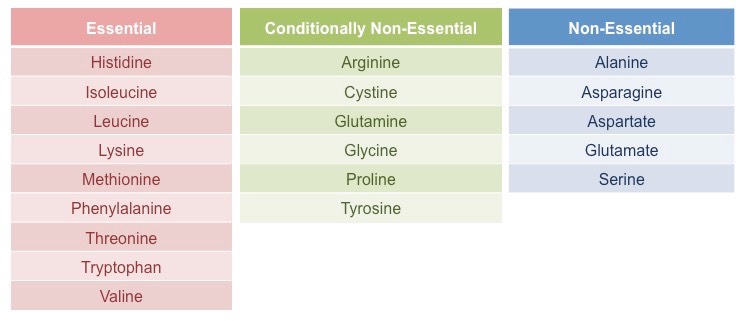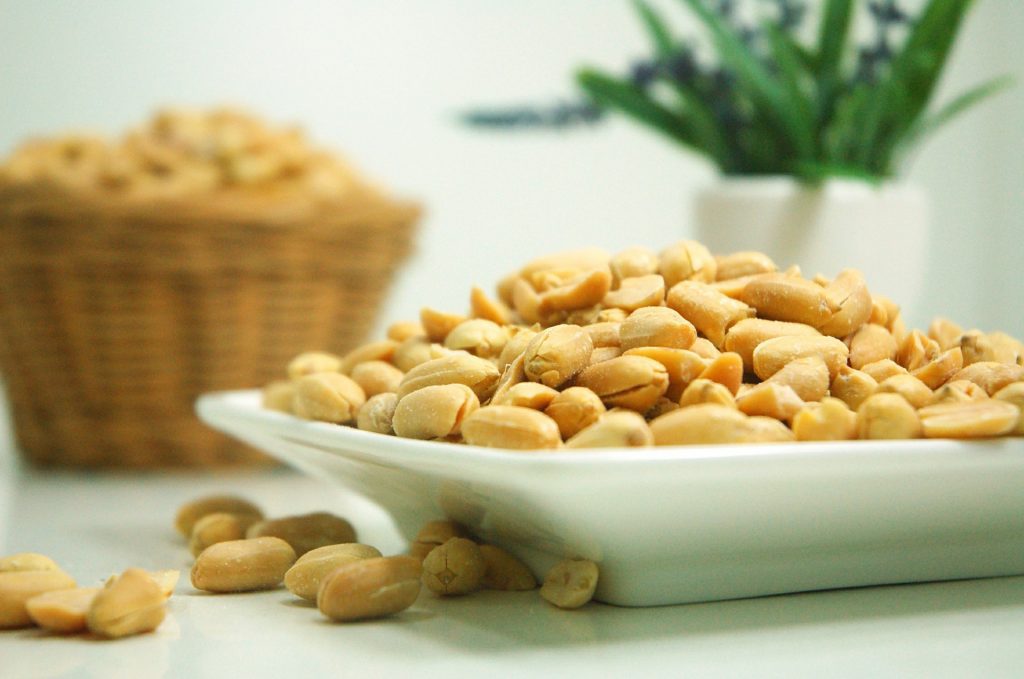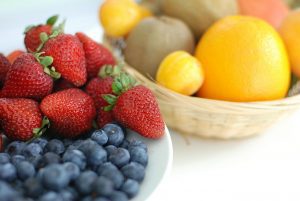This article is for those needing a very basic explanation of the three macro-nutrients: Protein, Carbohydrate, and Fat.
Once you understand these macro-nutrients it will make healthy eating feel a lot clearer.

Protein
It is unashamedly taken from a children’s health web site, as for now it need not be any more complicated than that.
From kidshealth.org
“You probably know you need to eat protein, but what is it? Many foods contain protein, but the best sources are beef, poultry, fish, eggs, dairy products, nuts, seeds, and legumes like black beans and lentils.
Protein builds, maintains, and replaces the tissues in your body. Your muscles, your organs, and your immune system are made up mostly of protein.
Your body uses the protein you eat to make lots of specialized protein molecules that have specific jobs. For instance, your body uses protein to make hemoglobin, the part of red blood cells that carries oxygen to every part of your body.
Other proteins are used to build cardiac muscle. In fact, whether you’re running or just hanging out, protein is doing important work like moving your legs, carrying oxygen to your body, and protecting you from disease.

All About Amino Acids
When you eat foods that contain protein, the digestive juices in your stomach and intestine go to work. They break down the protein in food into basic units, called amino acids. The amino acids then can be reused to make the proteins your body needs to maintain muscles, bones, blood, and body organs.
Scientists have found many different amino acids in protein, but 22 of them are very important to human health.
Of those 22 amino acids, your body can make 13 of them without you ever thinking about it. Your body can’t make the other nine amino acids, but you can get them by eating protein-rich foods. They are called essential amino acids because it’s essential that you get them from the foods you eat.
Different Kinds of Protein
“Protein from animal sources, such as meat and milk, is called complete, because it contains all nine of the essential amino acids. Most vegetable protein is considered incomplete because it lacks sufficient amounts of one or more of the essential amino acids. This can be a concern for someone who doesn’t eat meat or milk products. People who eat a vegetarian diet can still get all their essential amino acids by eating a wide variety of protein-rich vegetable foods.
For instance, you can’t get all the amino acids you need from peanuts alone, but if you have peanut butter on whole-grain bread, you’re set. Likewise, red beans won’t give you everything you need, but red beans and rice will do the trick.
The good news is that you don’t have to eat all the essential amino acids in every meal. As long as you have a variety of protein sources throughout the day, your body will grab what it needs from each meal.”

How Much Is Enough?
A lot of articles you read on fitness sites might give quite extreme suggestions for protein intake. This is for two reasons: 1) a misconception that the more you eat, the more muscle you grow (true up to a point) and 2) they are trying to sell protein powders, which solve a problem you’ve only just discovered exists.
With that in mind I would like to flip the question to “how much is not enough?” and suggest that an active individual averages at LEAST 1 gram per kg of lean BW and no more than 2.2 grams per kg (1 gram per lb) Lean Body Mass.
A review by an International Sports Nutrition Journal concluded that strength athletes should look at 1.7 to 2.0 grams of protein per kg of body weight and endurance athletes aim for 1.2 to 1.6 grams per kg.
Carbohydrate
From kidshealth.org
“You’ve probably seen ads for low-carb foods and diets, but kids and adults need carbohydrates. Most foods contain carbohydrates, which the body breaks down into simple sugars — the major source of energy for the body.
Two Types of Carbohydrates
There are two major types of carbohydrates (or ‘carbs’ for short) in foods: simple and complex.

Simple carbohydrates: These are also called simple sugars. Simple sugars are found in refined sugars, like the white sugar you’d find in a sugar bowl. If you have a lollipop, you’re eating simple carbs. But you’ll also find simple sugars in more nutritious foods, such as fruit and milk. It’s better to get your simple sugars from food like fruit and milk. Why? Because sugar isn’t added to these foods and they also contain vitamins, fiber, and important nutrients like calcium. A lollipop has lots of added sugar and doesn’t contain important nutrients.
Complex carbohydrates: These are also called starches. Starches include grain products, such as bread, crackers, pasta, and rice. As with simple sugars, some complex carbohydrate foods are better choices than others. Refined grains, such as white flour and white rice, have been processed, which removes nutrients and fibre. But unrefined grains still contain these vitamins and minerals. Unrefined grains also are rich in fibre, which helps your digestive system work well. Fibre helps you feel full, so you are less likely to overeat these foods. That explains why a bowl of oatmeal fills you up better than sugary candy with the same amount of calories as the oatmeal.
So which type of carbs should you eat? Both can be part of a healthy diet.
How the Body Uses Carbohydrates
When you eat carbs, your body breaks them down into simple sugars, which are absorbed into the bloodstream. As the sugar level rises in your body, the pancreas releases a hormone called insulin. Insulin is needed to move sugar from the blood into the cells, where the sugar can be used as a source of energy.
When this process goes fast — as with simple sugars — you’re more likely to feel hungry again soon. When it occurs more slowly, as with a whole-grain food, you’ll be satisfied longer. These types of complex carbohydrates give you energy over a longer period of time.

The carbs in some foods (mostly those that contain a lot of simple sugars) cause the blood sugar level to rise more quickly than others. Scientists have been studying whether eating foods that cause big jumps in blood sugar may be related to health problems like diabetes and heart disease.
You’re probably already on the right track if you are limiting simple sugars (such as candy) and eating more complex carbohydrates (like vegetables, oatmeal, and whole-grain wheat bread).”
How Much Is Enough?
If you’ve paid attention to any healthy eating article in the last 5 years, you’ll know that carbs are contributing a lot towards obesity. The problem here is refined sugars, and by cutting down on those you can still include carbohydrate as part of healthy lifestyle.
Again i’ll flip the question and ask “How much is not enough?”. The brain’s primary fuel source is glucose, and it takes up 18% of your energy needs in a working day. As a general guide you should average no lower than 100 grams of carbohydrate a day. You will find some people try extremely low carbohydrate diets to lose fat, but at 9to5strength we recommend not dipping under 100 grams. Why? If your brain doesn’t get enough glucose, you will likely experience symptoms of brain fog, such as an inability to think clearly, confusion, forgetfulness and irritability. These are not qualities you should be bringing to the workplace or family life.
In terms of above that, we recommend 2 grams per lb of lean body mass as a baseline. If you are exercising, it is a good idea to eat more than that, which we’ll cover in a future article.
Fat
Fat is a component in food. Some foods, including most fruits and vegetables, have almost no fat. Other foods have plenty of fat. They include nuts, oils, butter, and meats like beef.
The name — fat — may make it sound like something you shouldn’t eat, but fat is an important part of a healthy diet. Everyone needs a certain amount of fat in their diets so the brain and nervous system function correctly.

Types of Fat
You might see ads for foods that say they’re “low-fat” or “fat-free.” Lower-fat diets have been recommended for health and to help people lose weight. But nutrition experts are finding that fats are more complicated and that some kinds of fat are actually good for your health. As a bonus, fat in food helps people feel satisfied, so they don’t eat as much.
Here are the three major types:
Unsaturated fats: These are found in plant foods and fish. These may be good for heart health when they’re used in place of saturated and trans fats. Unsaturated fats are found in salmon, avocados, olives, and walnuts, and vegetable oils like soybean, corn, canola, and olive oil.
Saturated fats: These fats are found in meat and other animal products, such as butter, cheese, and all milk except skim. Saturated fats are also in palm and coconut oils. Eating too much saturated fat can raise blood cholesterol levels and increase the risk of heart disease.
Trans fats: These fats are found in stick margarine. Trans fats are also found in certain snack foods, baked goods, and fried foods. When you see “hydrogenated” or “partially hydrogenated” oils on an ingredient list, the food contains trans fats. Trans fats are also listed on the food label. Like saturated fats, trans fats can raise cholesterol and increase the risk of heart disease.
Why Do We Need Fat?
Fats fuel the body and help absorb some vitamins. They also are the building blocks of hormones and they insulate nervous system tissue in the body.
So fat is not the enemy, but you’ll want to choose the right amount — and the right kind — of fat. If you’re getting most of your fat from lean meats, fish, and heart-healthy oils, you’ve already made fat your friend!”
How Much Is Enough?
It is unhealthy to completely eliminate fat in the diet, and as long as you get the right type of fat you shouldn’t be overly concerned with getting too much. A target here should be 1 gram per kg of Lean Body Mass (LBM).
- If you are exercising, you can eat a little less fat and a little more carbohydrate.
- On days when you are inactive, you can eat more fat and less carbohydrate.
- Protein should stay relatively constant every day.
Thank you for reading. Please share with anyone looking to learn the basics of good nutrition.
If you’d like to learn more, I have a whole video series on nutrition.

